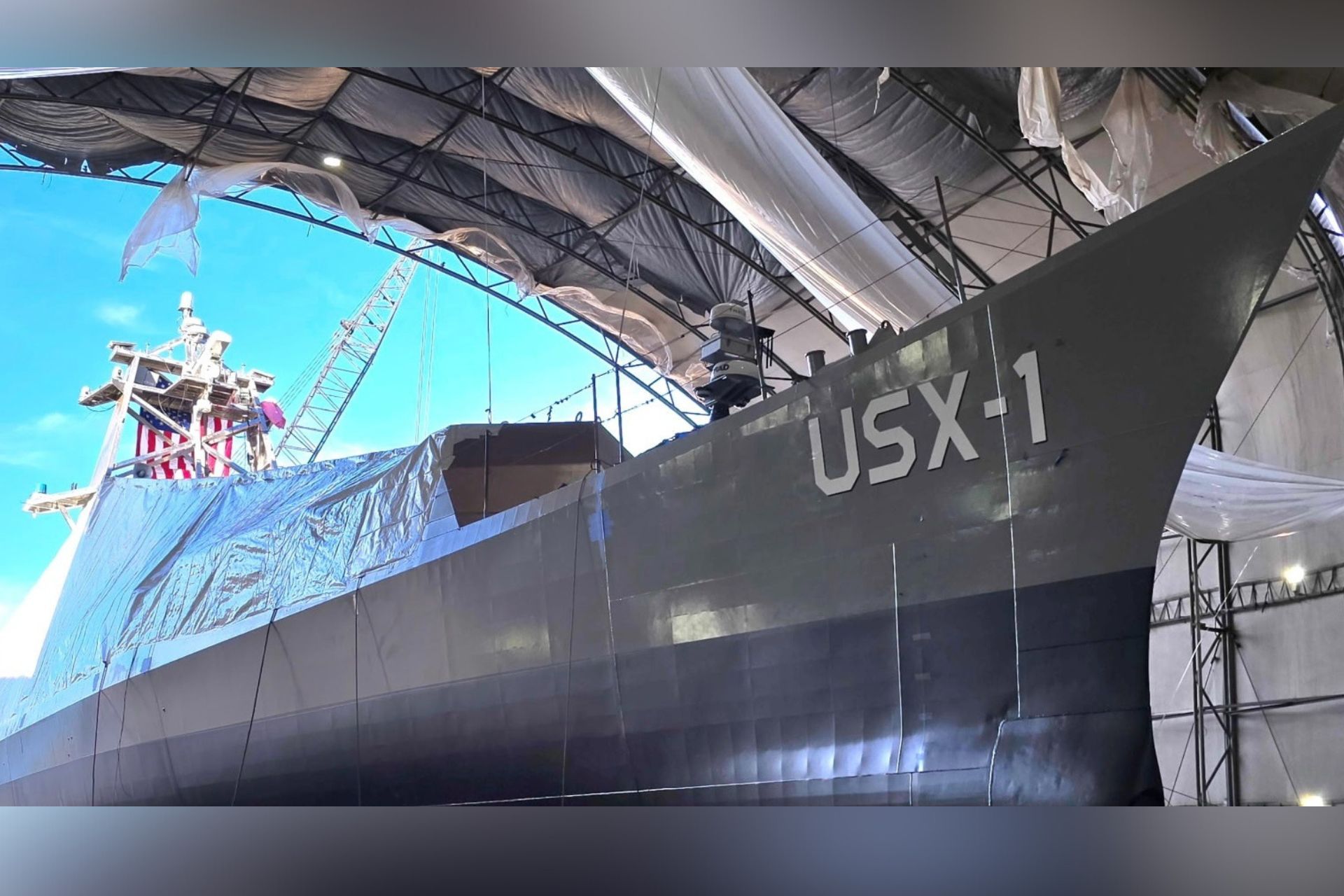Breaking News
DARPA's First Fully Autonomous USX-1 Defiant Vessel Enters Testing Phase.
The USX-1 Defiant, DARPA’s first fully autonomous vessel, has entered its testing phase, marking a significant milestone for the No Manning Required Ship (NOMARS) program. Completed in February 2025, this 180-foot, 240-metric-ton vessel is designed to operate independently for extended durations without human intervention. Its development reflects an effort to rethink traditional naval architecture by eliminating any need for crew accommodation, an approach that could influence future maritime operations.

Initiated in 2020, the NOMARS program aims to develop a medium unmanned surface vessel with a reliability rate of 90 percent over a one-year deployment period (Picture source: DARPA)
Built by Serco at its Washington shipyard, the Defiant was specifically engineered for autonomous operation. Unlike previous unmanned surface vessels, which were often modified versions of existing crewed ships, this vessel was designed from the ground up without any provisions for human presence. It lacks berths, kitchens, or survival equipment, freeing up significant space for payloads while reducing construction and operational costs. This design focuses on hydrodynamic efficiency, operational stealth, and resilience against environmental conditions and adversarial threats.
Initiated in 2020, the NOMARS program aims to develop a medium unmanned surface vessel with a reliability rate of 90 percent over a one-year deployment period. Defiant is scheduled to begin dockside evaluations in spring 2025 before embarking on a multi-month sea demonstration. These trials will assess its endurance, navigational autonomy, and ability to be refueled at sea, a critical factor for long-duration missions. In September 2024, a previous test involving the Mariner and Ranger unmanned vessels demonstrated Serco’s capability for autonomous refueling, a key feature for extended operations in contested environments.
Serco was awarded the NOMARS contract in 2022 over Leidos Gibbs & Cox as part of the Pentagon’s broader effort to expand unmanned naval capabilities. Interest in these platforms has grown, particularly in the Pacific theater, where the U.S. Navy is considering their deployment in potential conflict scenarios. Admiral Samuel Paparo, commander of the U.S. Indo-Pacific Command, has outlined a strategic concept known as "Hellscape," in which swarms of unmanned vessels would be used to disrupt military operations, particularly in the Taiwan Strait.
Technologically, the Defiant is designed to support modular payloads, including potential weapons systems. While DARPA has only released images of the ship covered with a tarp, conceptual models from Serco indicate that it could be equipped with a BAE Adaptable Deck Launcher and a modular payload container. A larger variant, envisioned for future large unmanned surface vessels, could include four modular launchers with up to sixteen Mark 41 vertical launch cells, significantly enhancing its operational flexibility.
One of the key challenges of autonomous systems has been cost, as uncrewed platforms have often remained as expensive as their manned counterparts despite removing the need for personnel. The NOMARS program seeks to address this issue by developing a vessel that is not only autonomous but also cost-effective in production and deployment. Ryan Maatta, Serco’s chief marine engineer and deputy program manager for DARPA, highlighted in an interview that Defiant is designed to lower mission costs while increasing payload capacity, making it a more efficient alternative to traditional manned platforms.
The absence of a crew also raises new considerations for safety and maintenance. In case of fire, for example, the ship could be equipped with an automated gas-based fire suppression system, a method unsuitable for manned vessels but effective on unmanned platforms. This approach aligns with the NOMARS program’s objective of redefining naval architecture with solutions optimized for autonomous operations.
With the launch of the Defiant, DARPA and Serco are entering a critical phase of the NOMARS program. The upcoming months will be decisive in validating the concept and proving its operational viability. If the trials are successful, this technology could lay the groundwork for a new class of cost-effective unmanned vessels capable of sustained operations with unprecedented availability, potentially reshaping the U.S. Navy’s maritime strategy in response to future challenges.


























